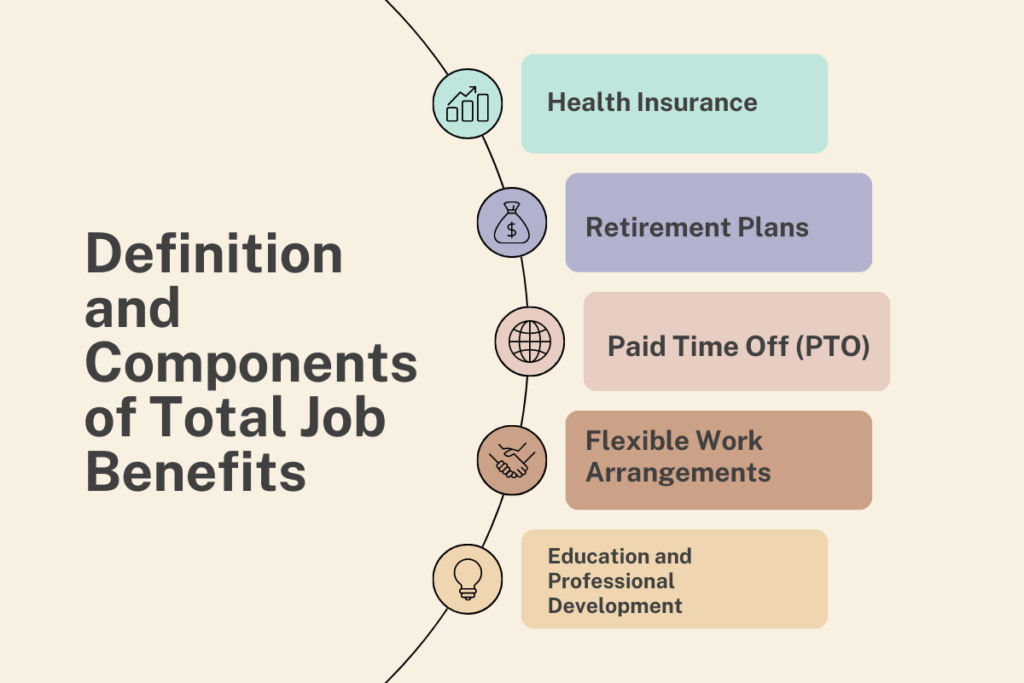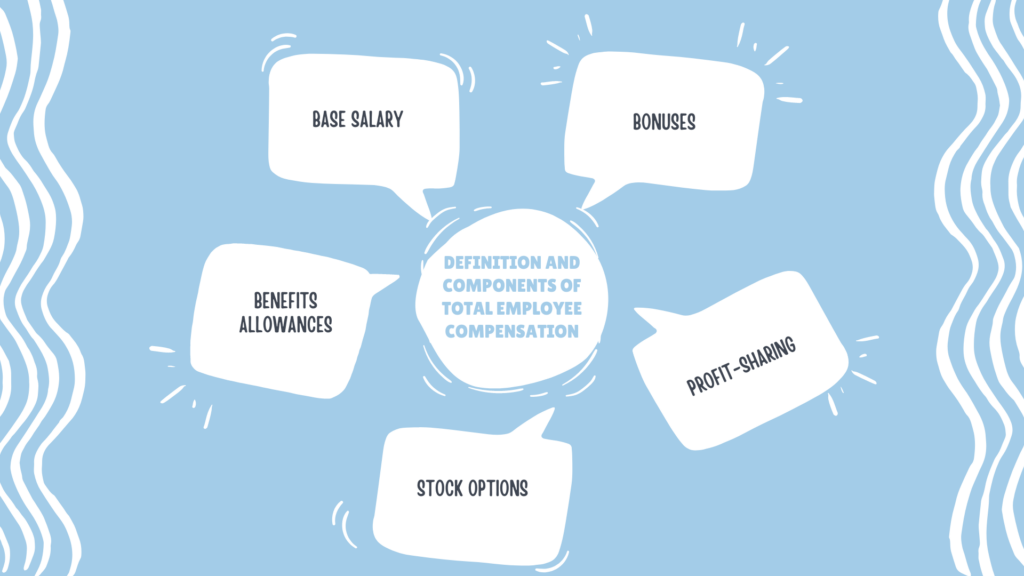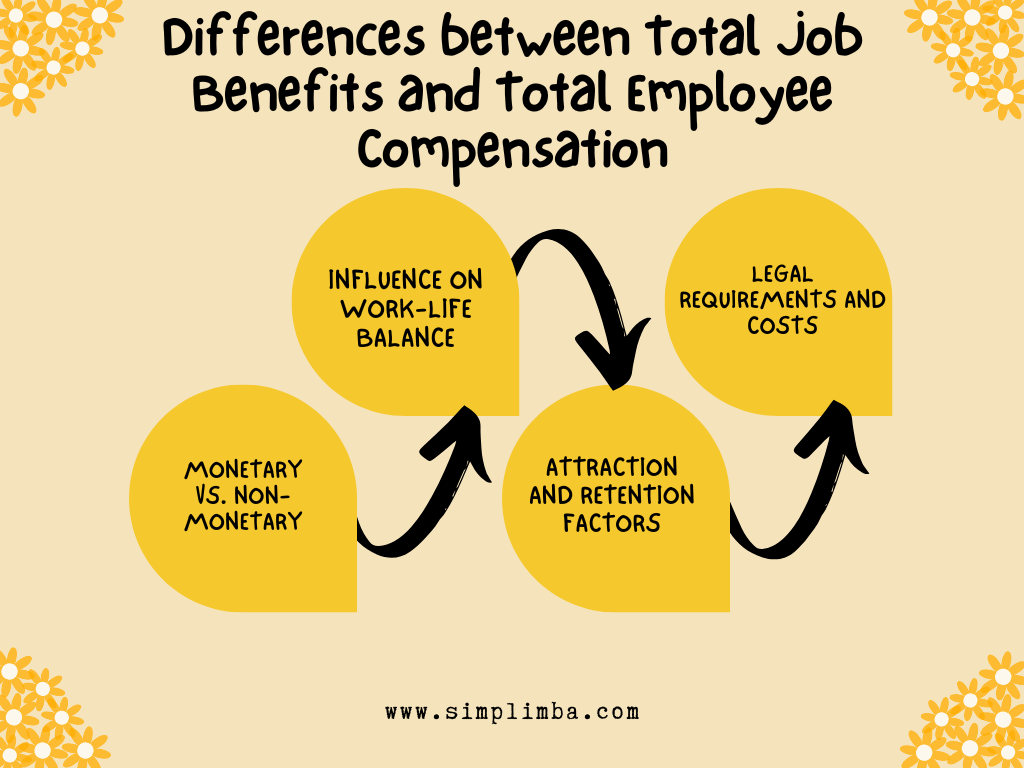Introduction
Job Benefits: In the world of human resources management, compensation and benefits play a crucial role in attracting and retaining talented employees. While these two terms are often used interchangeably, it is important to understand their distinct differences. In this blog post, we will delve into the concept of total job benefits and total employee compensation, exploring their components, purposes, and how they contribute to overall employee satisfaction. By the end of this article, you will have a comprehensive understanding of the differences between total jobbenefits and total employee compensation.
How total job benefits and total employee compensation differ – Overview from Maslow’s Hierarchy
From the perspective of Maslow’s hierarchy of needs, total job benefits and total employee compensation serve different purposes in fulfilling the needs of individuals.
Total jobbenefits refer to the additional perks and privileges that an employee receives beyond their base salary, such as health insurance, retirement plans, paid time off, and bonuses. These benefits typically cater to the higher levels of Maslow’s hierarchy, which include the needs for safety, belongingness, and esteem.
For instance, health insurance coverage addresses the safety and security needs of employees, as it provides them with financial protection against unexpected medical expenses. Retirement plans contribute to employees’ sense of safety by ensuring their financial stability during their older age.
Similarly, paid time off and bonuses encourage a sense of belongingness and esteem among employees. Paid time off allows individuals to have quality time for themselves, their families, and their social connections, fulfilling their need for belonging. Bonuses, on the other hand, recognize and reward employees’ efforts and achievements, boosting their self-esteem and self-worth.
On the other hand, total employee compensation refers to the entire package of financial and non-financial rewards that an employee receives in exchange for their work. This includes not only the base salary but also performance-based incentives, allowances, and other monetary benefits.
When it comes to satisfying Maslow’s hierarchy of needs, total employee compensation primarily addresses the lower-level needs, such as physiological and safety needs. The base salary ensures that employees can meet their basic physiological needs, such as food, shelter, and clothing. In addition, performance-based incentives and allowances offer financial security and stability, enhancing employees’ sense of safety.
How total job benefits and total employee compensation differ?
Definition and Components of Total Job Benefits
Total job benefits encompass non-monetary rewards and perks that employers offer to their employees in addition to their base salary or hourly wage. These benefits aim to provide employees with social protection, lifestyle enhancements, and a better work-life balance. Common components of total jobbenefits include:

1. Health Insurance: Comprehensive medical, dental, and vision coverage, which help employees and their families maintain their health and well-being. According to a study by the Kaiser Family Foundation, in 2020, approximately 56% of employers in the United States offered health benefits to their employees.
2. Retirement Plans: Pension schemes, 401(k) plans, or other retirement savings programs that enable employees to accumulate funds for their post-retirement life. A survey conducted by the Society for Human Resource Management (SHRM) found that 89% of organizations offered a defined contribution retirement plan in 2020.
3. Paid Time Off (PTO): Vacations, holidays, and sick leave that allow employees to take time off work while still receiving their regular pay. The Bureau of Labor Statistics reported an average of 10 days of paid vacation leave for full-time employees in private industry in the United States.
4. Flexible Work Arrangements: Options such as telecommuting, flextime, or compressed workweeks that provide employees with greater control over their work schedules. This flexibility can contribute to increased employee morale and work-life balance.
5. Education and Professional Development: Opportunities for employees to enhance their skills and knowledge through training programs, tuition reimbursement, or company-sponsored education initiatives. A study conducted by the World at Work and the National Business Group on Health found that 84% of organizations in the United States offered tuition assistance programs.
Definition and Components of Total Employee Compensation
Total employee compensation, on the other hand, refers to the monetary rewards and incentives that employees receive. It encompasses the base salary or hourly wage that an employee earns, as well as additional bonuses or performance-based incentives. The components of total employee compensation include:

1. Base Salary: The fixed amount of money that an employee earns for performing their regular job duties. This amount may be determined by factors such as education, experience, job role, and market rates.
2. Bonuses: Additional payments or incentives provided to employees based on their individual or collective performance, such as annual performance bonuses or sales commissions.
3. Profit-Sharing: A share of the company’s profits distributed among employees as an additional form of compensation. Profit-sharing plans can align employees’ interests with the organization’s success and create a sense of ownership and motivation.
4. Stock Options: The opportunity for employees to purchase company stock at a discounted price or receive stock grants as part of their compensation package. This provides employees with a financial stake in the success of the organization.
5. Benefits Allowances: Monetary allowances offered to employees to cover specific expenses, such as transportation or childcare costs. These allowances aim to enhance employees’ financial well-being and alleviate some of their financial burdens.
Differences between Total Job Benefits and Total Employee Compensation
While both total job benefits and total employee compensation contribute to overall employee satisfaction and well-being, they differ significantly in terms of their nature and focus.

1. Monetary vs. Non-monetary: The most evident distinction between the two lies in their monetary or non-monetary nature. Total jobbenefits primarily consist of non-monetary rewards, such as health insurance and paid time off, that contribute to employees’ quality of work life and overall well-being. In contrast, total employee compensation focuses on the direct financial rewards that employees receive, such as their base salary, bonuses, and profit-sharing.
2. Influence on Work-Life Balance: Total job benefits directly impact employees’ work-life balance by providing them with resources and support to manage their personal obligations and enjoy a fulfilling life outside of work. On the other hand, total employee compensation plays a significant role in employees’ financial well-being and motivation to excel in their roles.
3. Attraction and Retention Factors: While both factors influence employee attraction and retention, the weightage may vary for different individuals and industries. Total jobbenefits can be a pivotal factor for employees seeking stability, security, and a healthy work-life balance. On the other hand, total employee compensation can be a significant factor for those driven by financial incentives, career advancement, and goals.
4. Legal Requirements and Costs: Compensation is often subject to legal requirements, such as minimum wage laws or compensation limits. Benefit programs, including health insurance and retirement plans, may also have legal regulations and compliance requirements. Additionally, the costs associated with total employee compensation and total job benefits differ, with benefits often being more significant in terms of financial expenditure for employers.
Balancing Total Job Benefits and Total Employee Compensation
Finding the right balance between total jobbenefits and total employee compensation is vital for organizations to attract, retain, and motivate their workforce. Offering comprehensive benefits packages while ensuring competitive compensation involves considerations of financial sustainability and alignment with organizational goals. Several companies have excelled in finding this balance, such as Google, which offers a unique combination of competitive salaries, extensive benefits, and a favorable work environment to attract and retain top talent.
Human resources professionals, compensation committees, and organizations need to continually evaluate and adapt their total reward programs to meet the evolving needs and expectations of their employees. By maintaining an equitable and competitive compensation and benefits strategy, organizations can create an attractive work environment that enhances employee satisfaction, performance, and loyalty.
Conclusion
In conclusion, total job benefits and total employee compensation are key components of an employee’s overall package. While total job benefits encompass non-monetary rewards and perks that contribute to their work-life balance and overall well-being, total employee compensation focuses on the direct financial rewards they receive. Striking the right balance between these two factors is crucial for organizations to attract and retain talented employees, motivate their workforce, and ensure long-term success. By understanding the nuanced differences and leveraging the best practices in compensation and benefits management, organizations can build a highly engaged and productive workforce that thrives in today’s competitive business landscape
Samrat is a Delhi-based MBA from the Indian Institute of Management. He is a Strategy, AI, and Marketing Enthusiast and passionately writes about core and emerging topics in Management studies. Reach out to his LinkedIn for a discussion or follow his Quora Page

